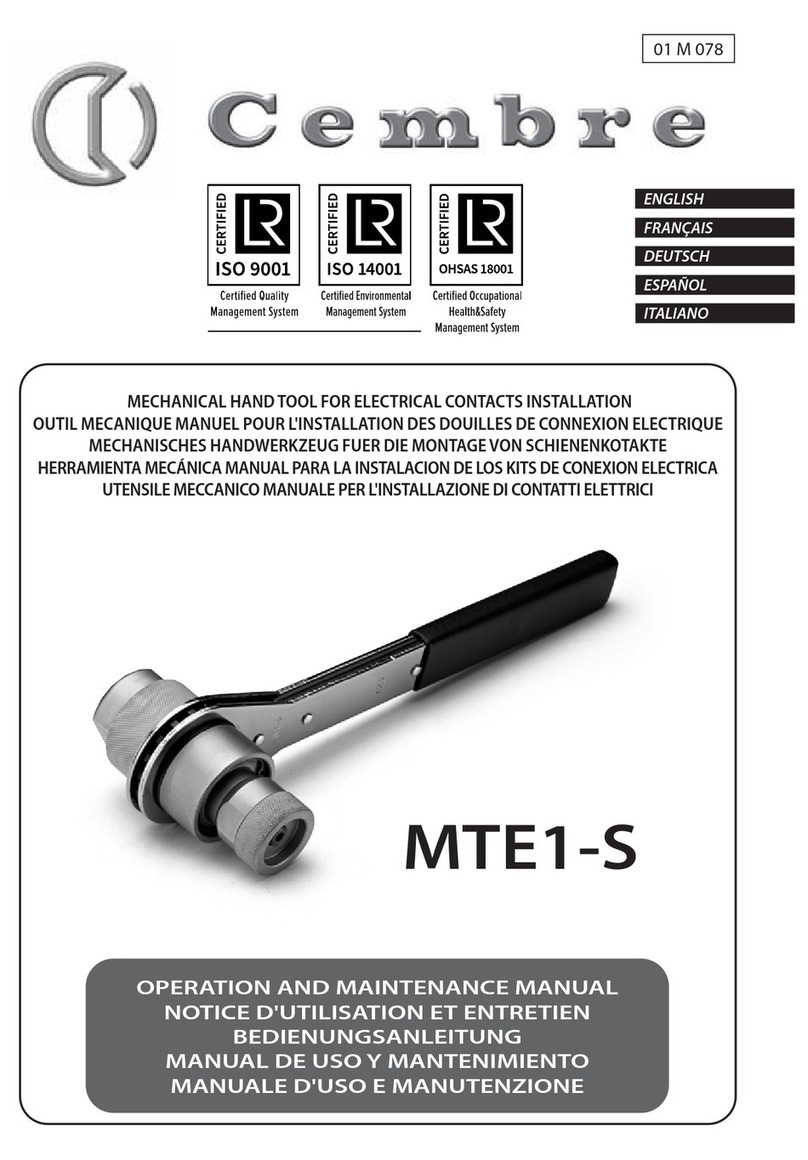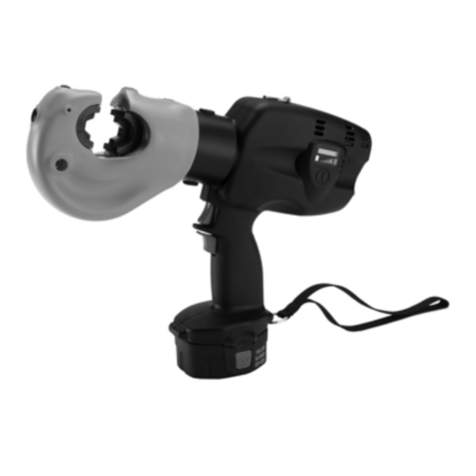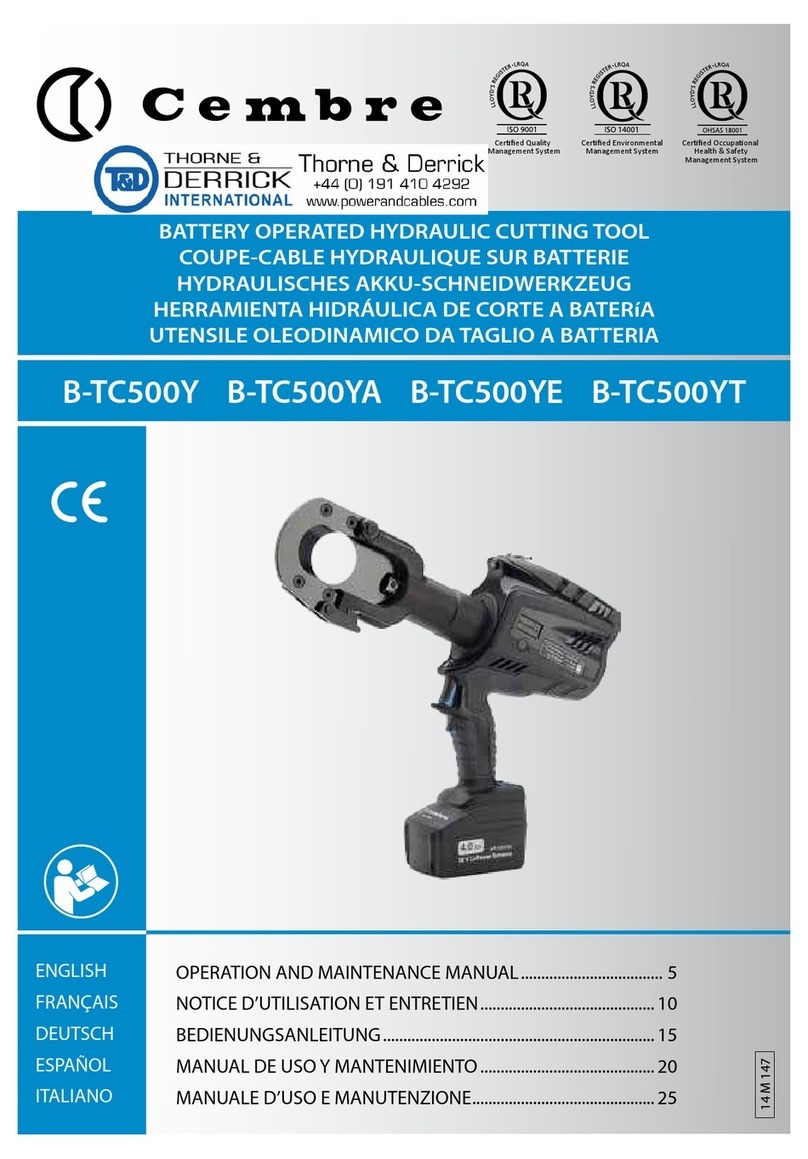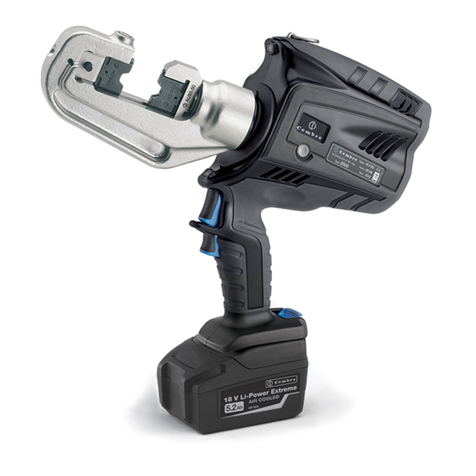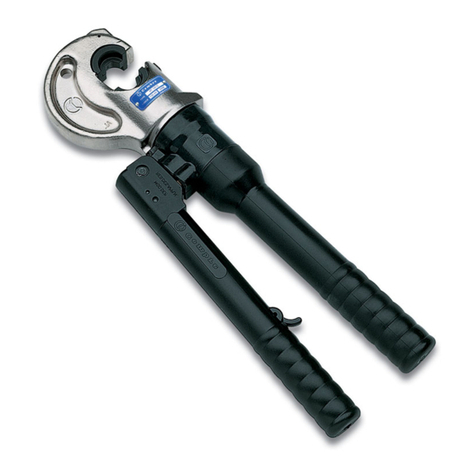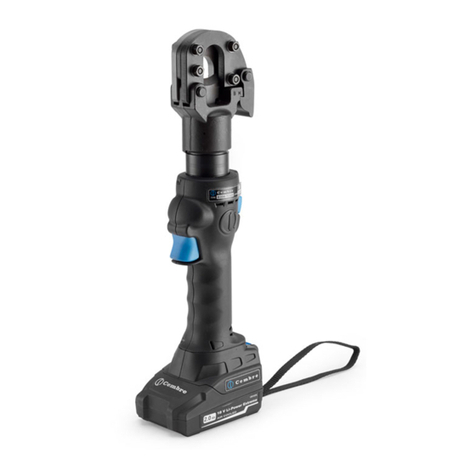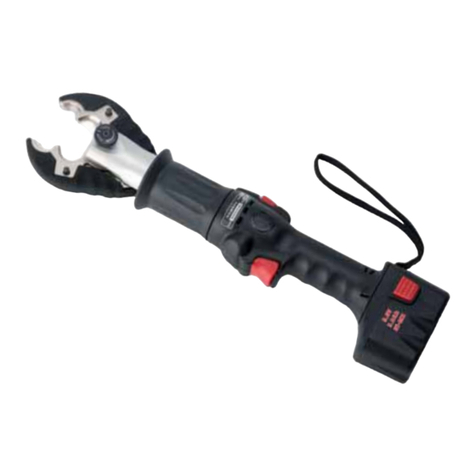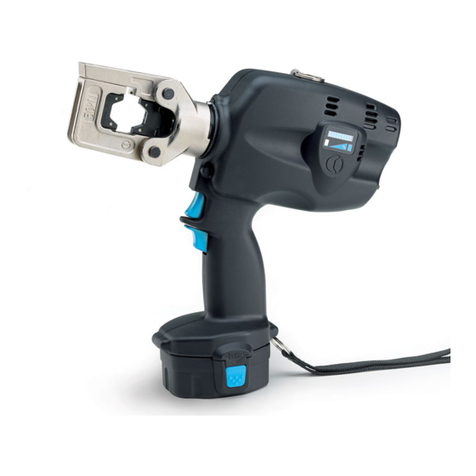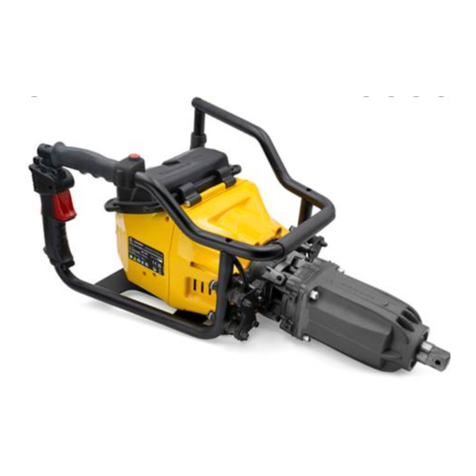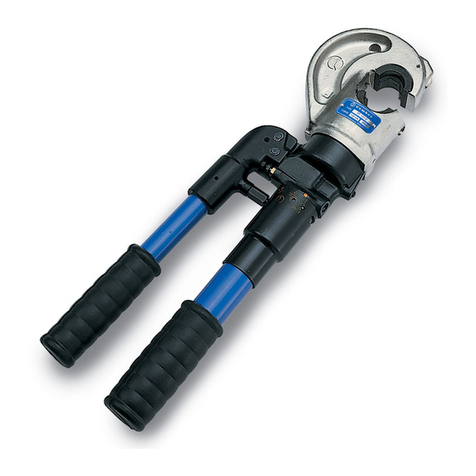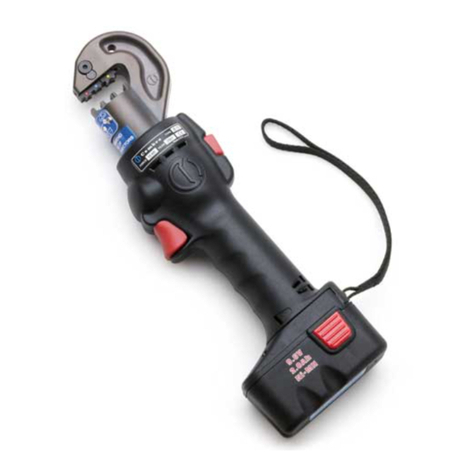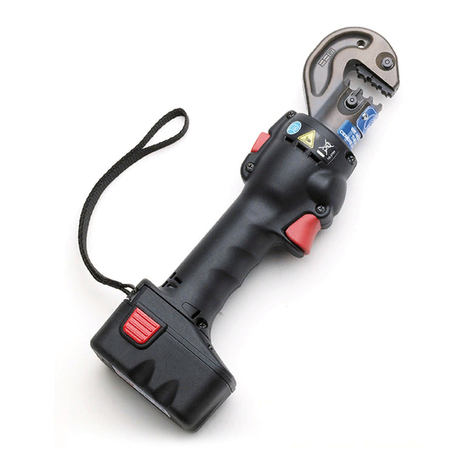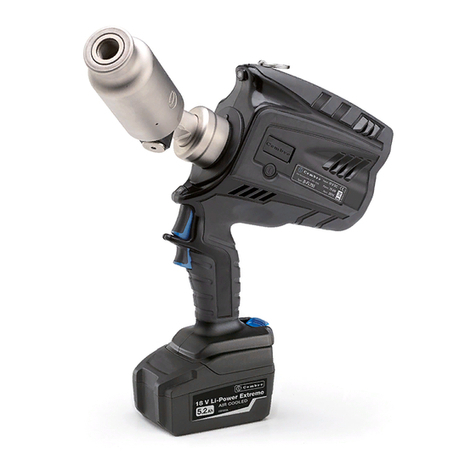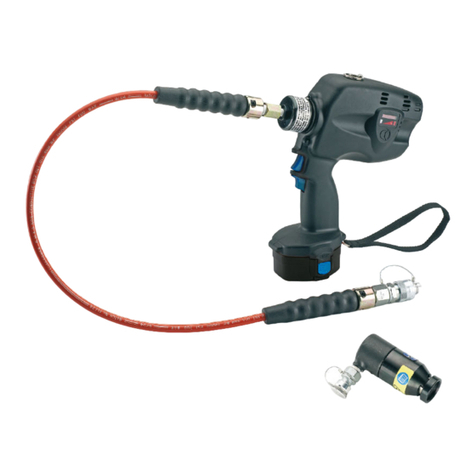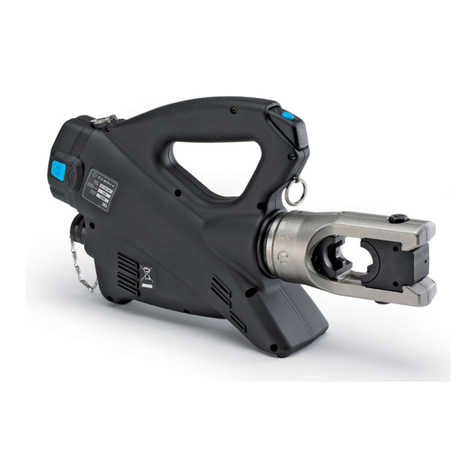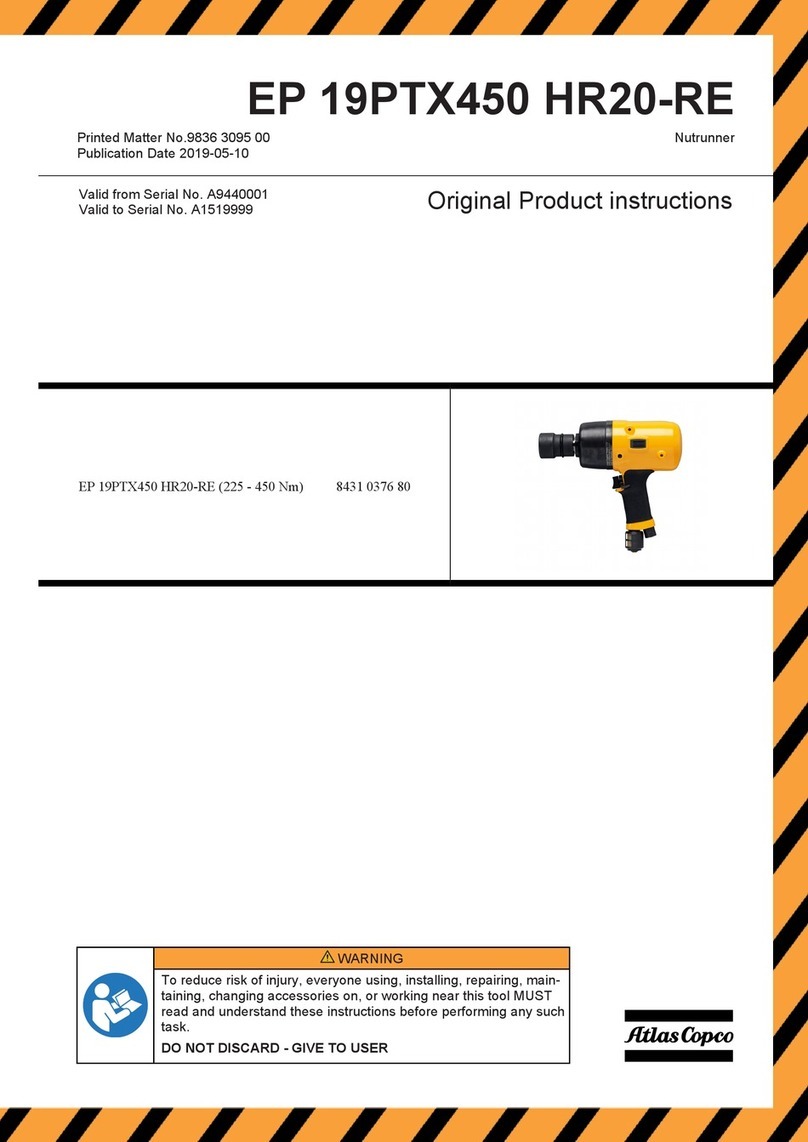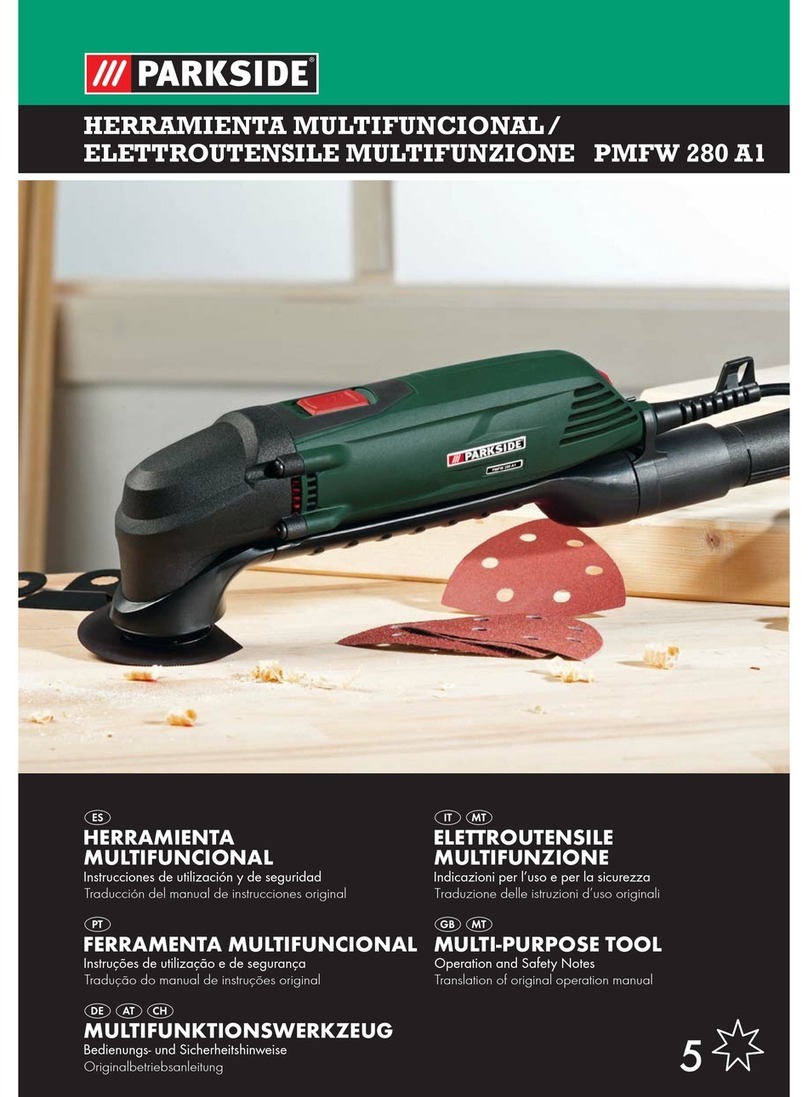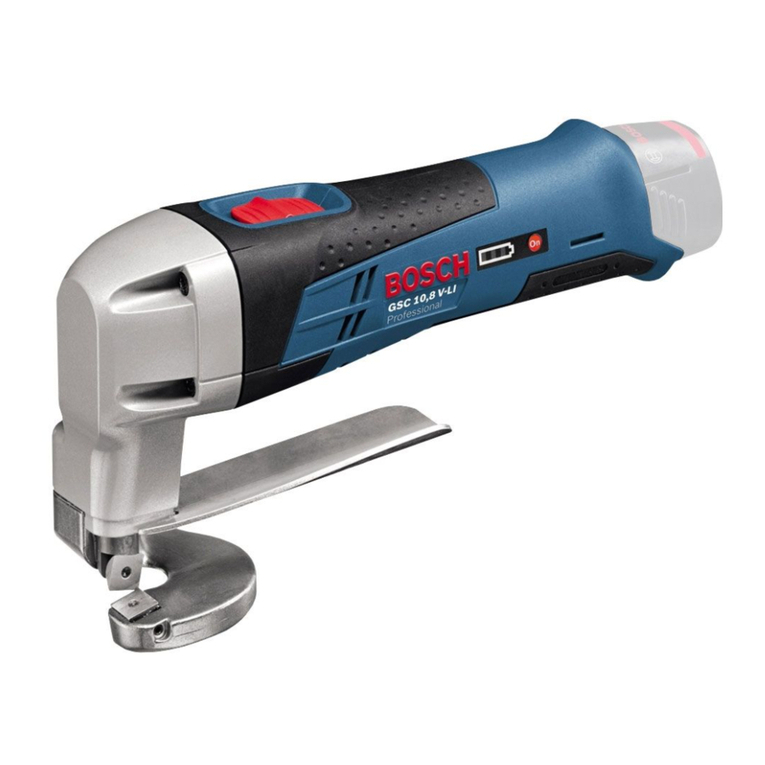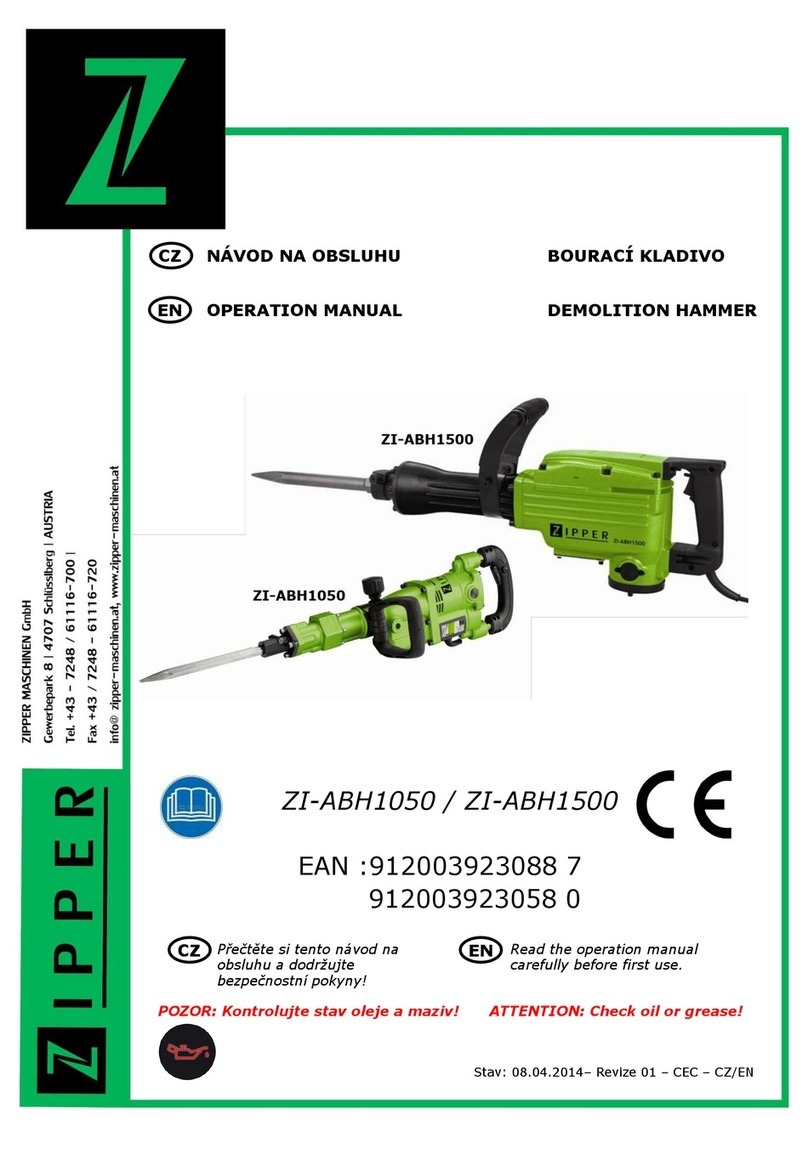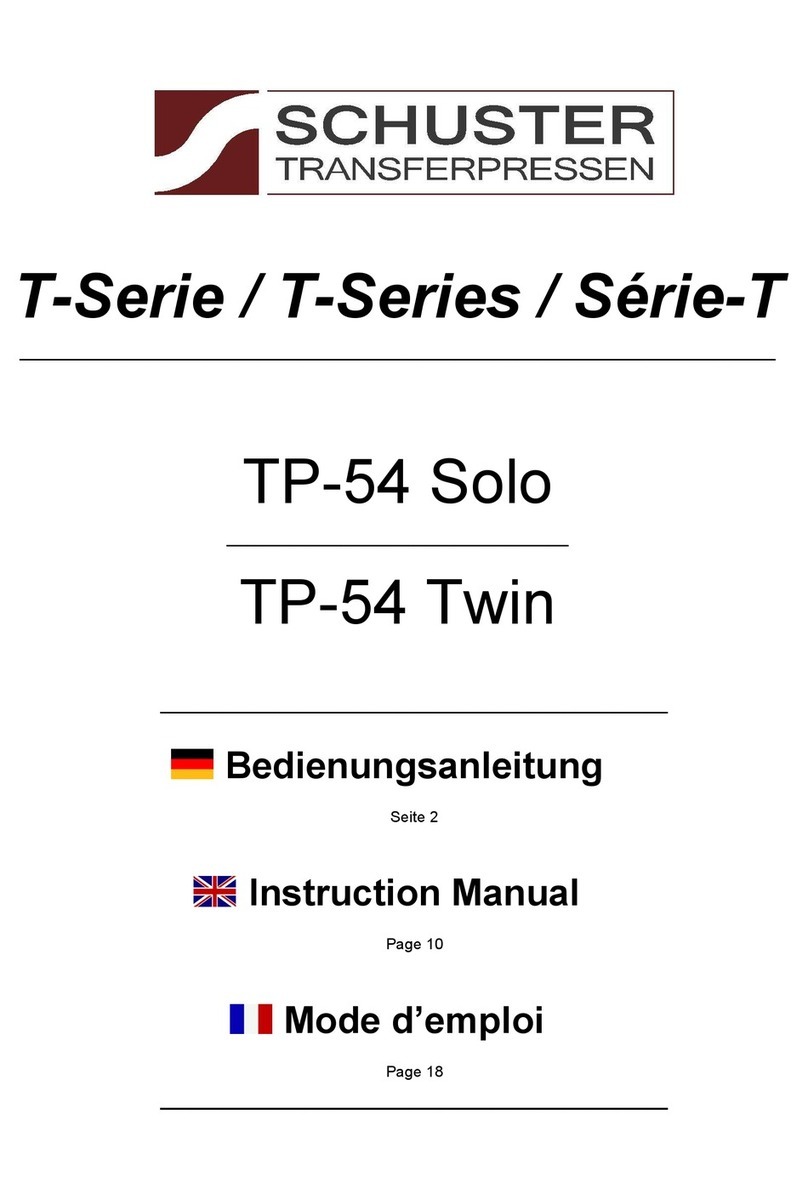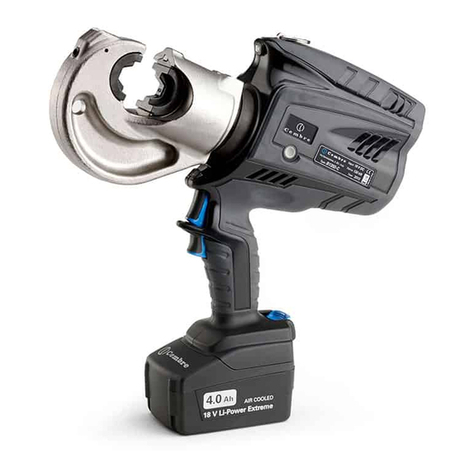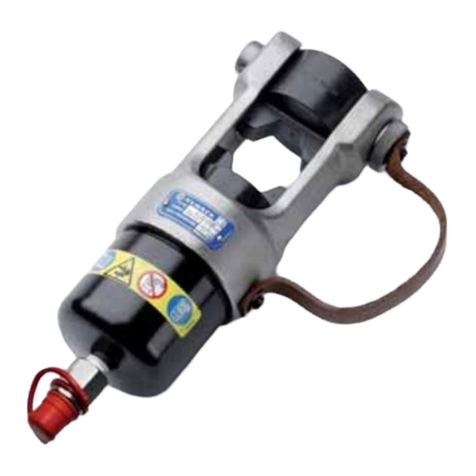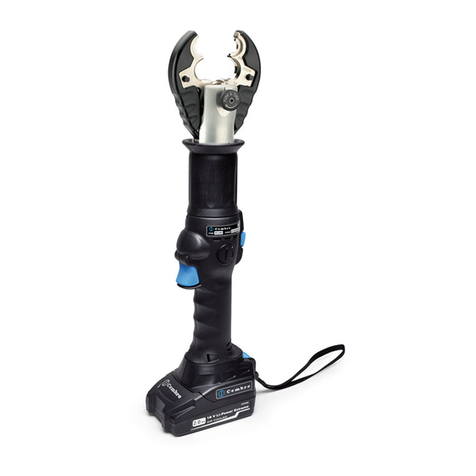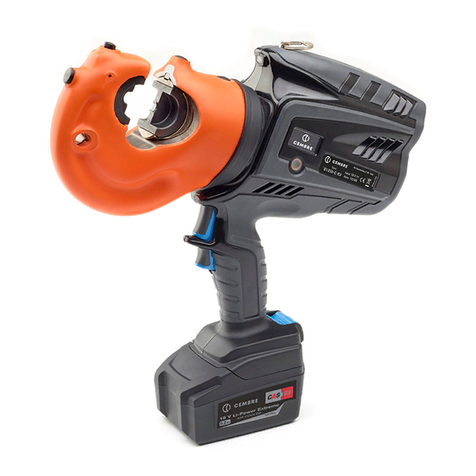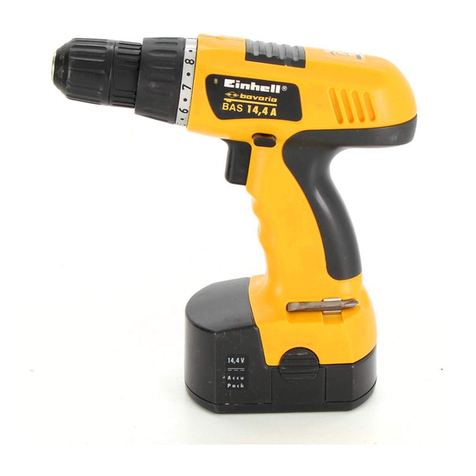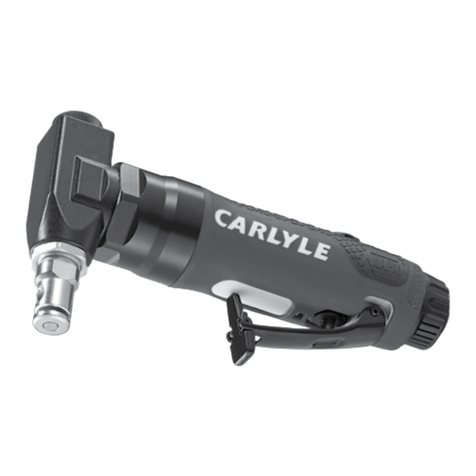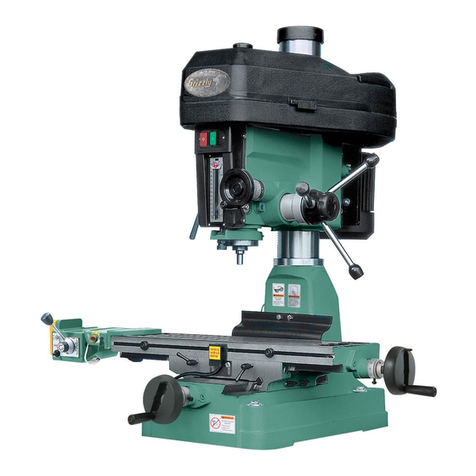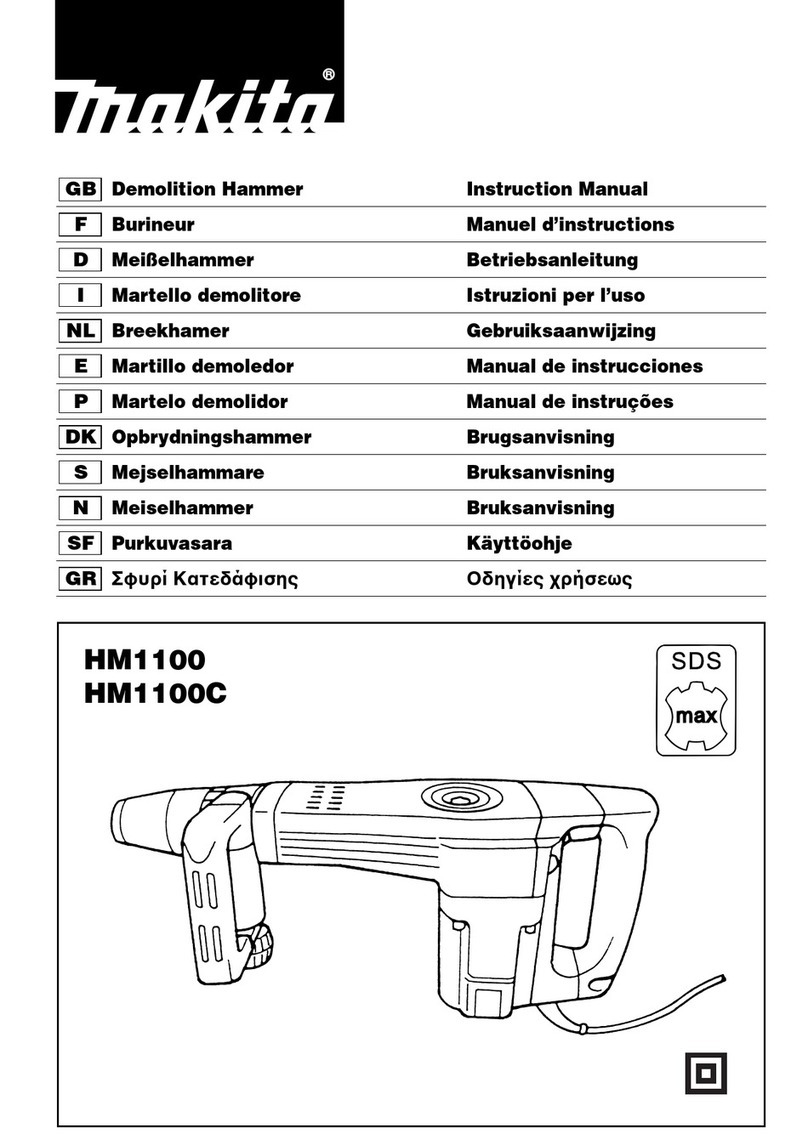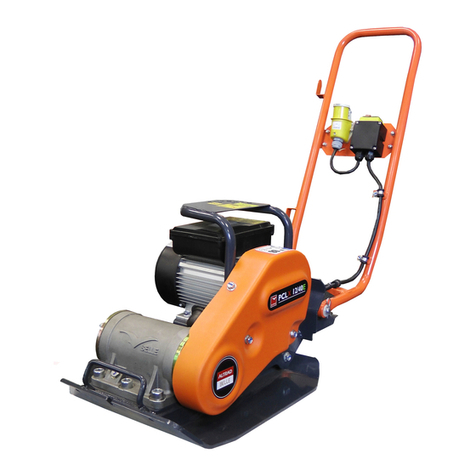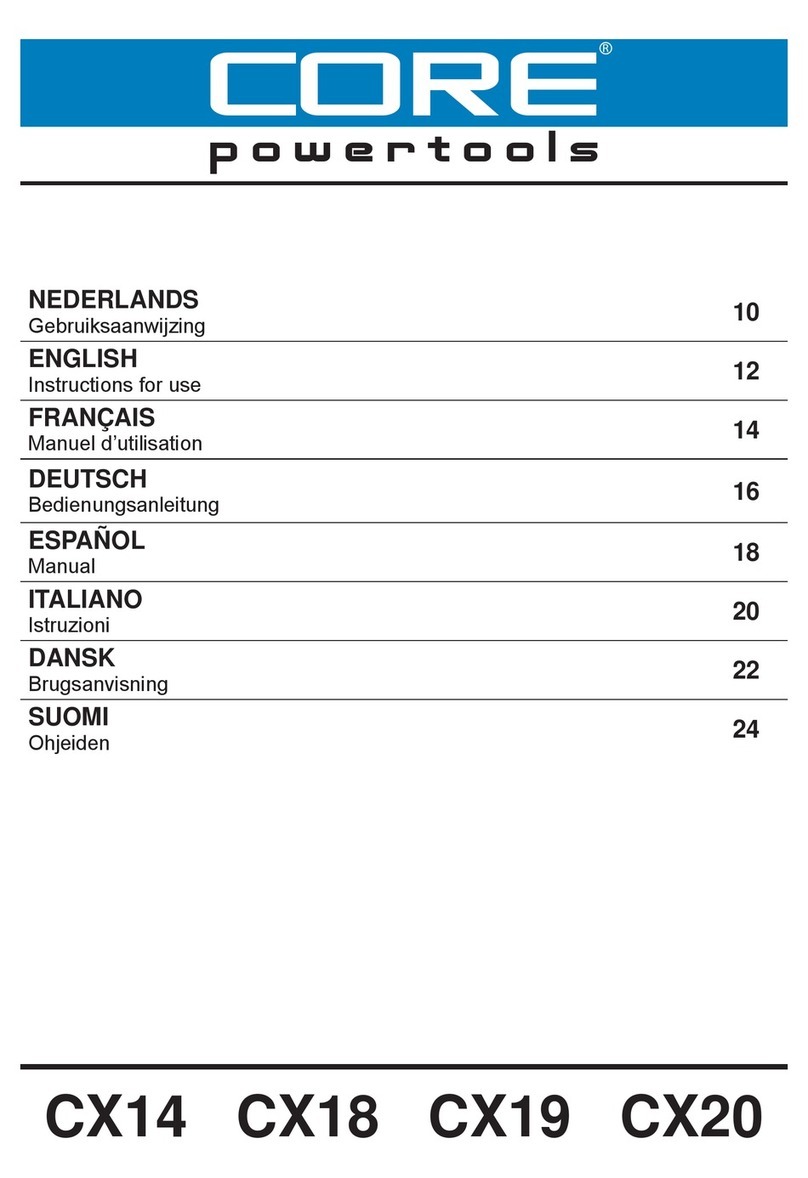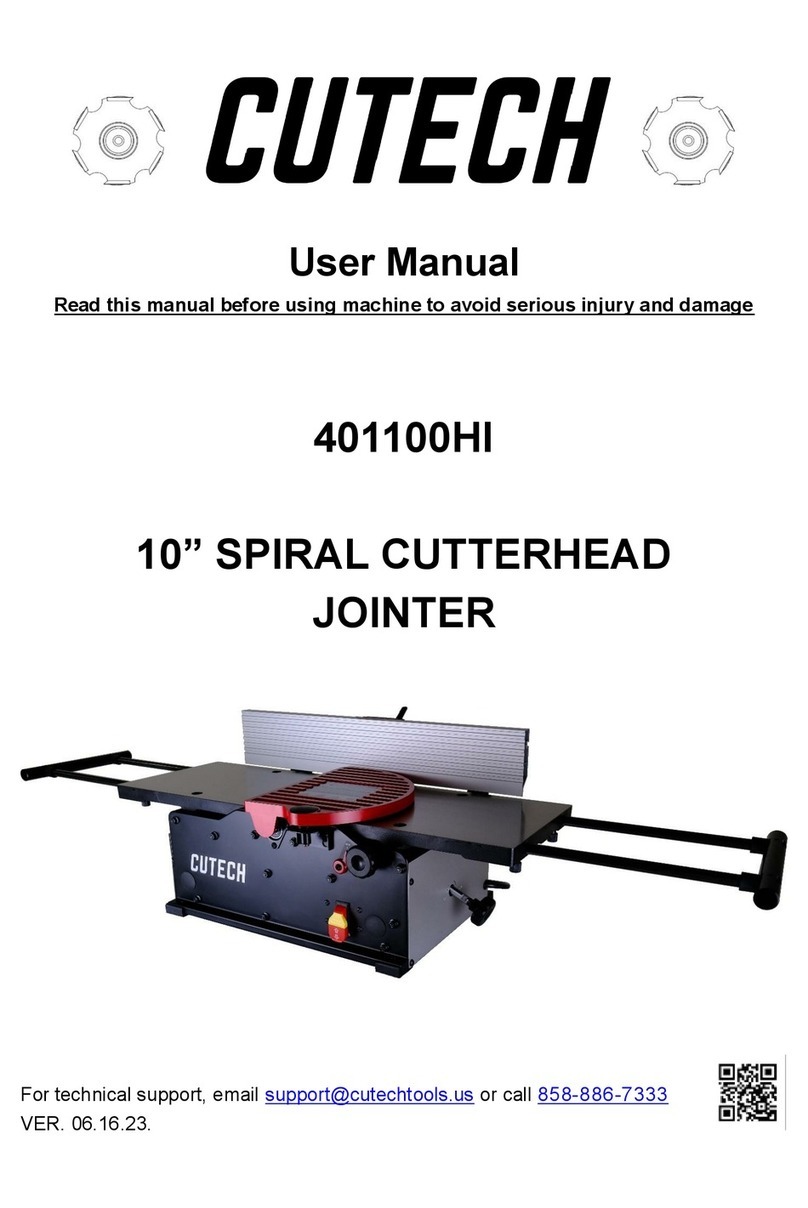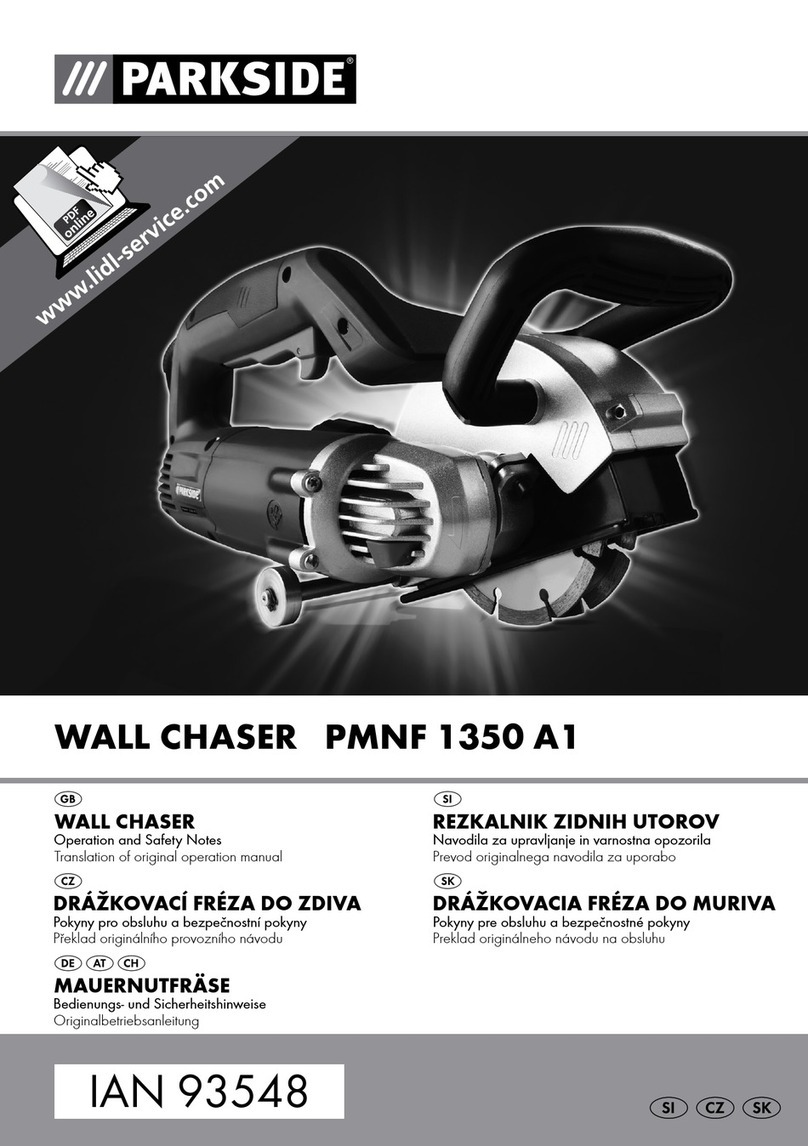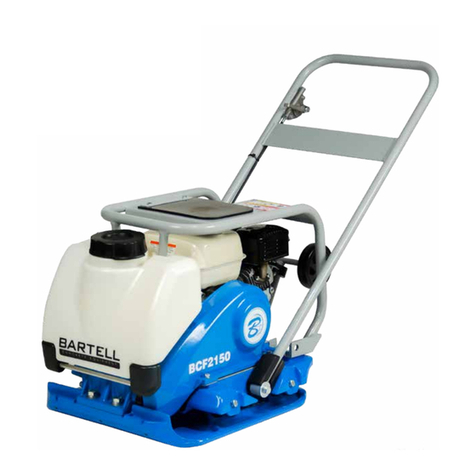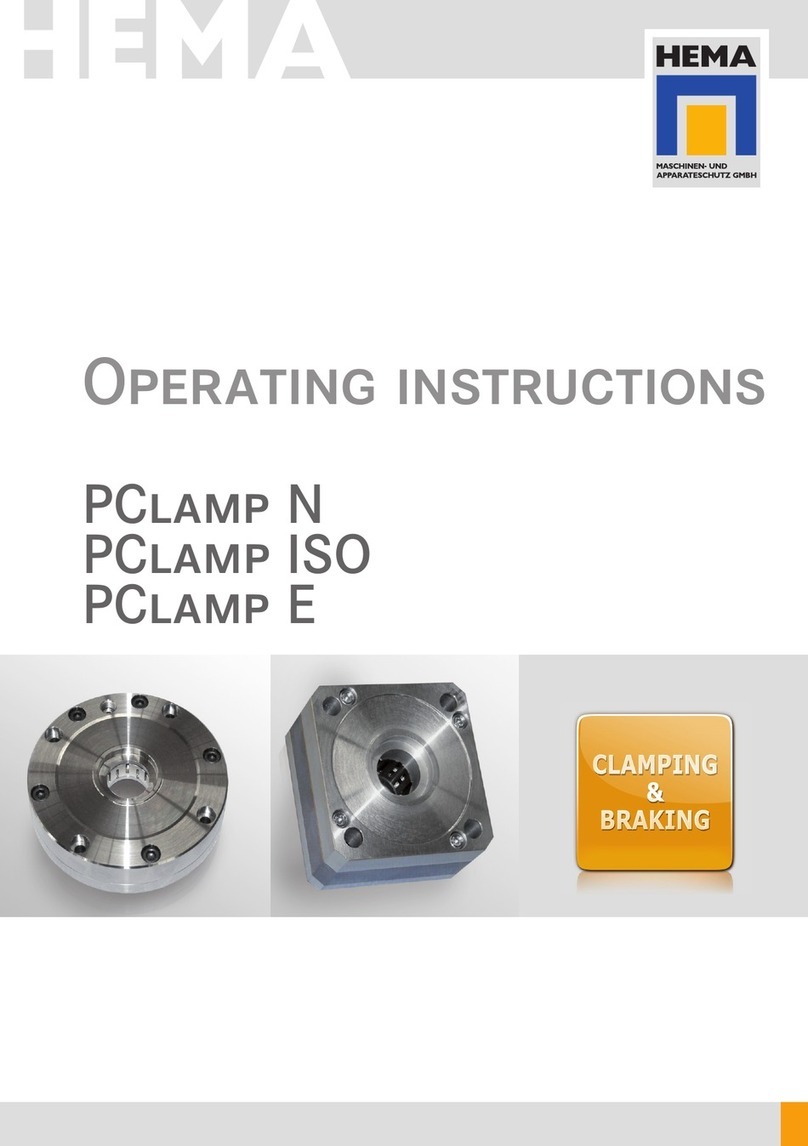
11
FRANÇAIS
4. ENTRETIEN (Voir Fig. 3)
Leseul problèmepouvantêtrerencontréparfois,nécessitantune intervention,estla présenced'une
bulle d'air dans le circuit hydraulique.
Cet incident est caractérisé par un mauvais fonctionnement de l'outil: dans l'action de montée en
pression, soit la matrice inférieure ne monte pas, soit elle progresse trés lentement, soit elle monte
et redescent par à-coups.
Dans ce cas, il est nécessaire de procéder de la façon suivante:
4.1) Elimination de bulles d'air
a – Mettre l'outil en position verticale dans un étau (Fig. 3) en écartant le bras mobile (56).
b – A l'aide d'une clé 6 pans de 2,5 mm, ôter la vis (11) et degager complètement le bras principal
(1) laissant apparaître le réservoir d'huile en caoutchouc (13).
c – Retirer le capuchon (12) du réservoir.
d – Actionner 3 ou 4 fois le bras mobile (10), faisant avancer le piston principal (3).
e – Relâcher la pression d'huile, en compressant l'axe (8) jusqu'à la rétraction totale du piston et
de l'huile dans son réservoir.
f – Refaire les opérations (d -e) au moins 5 fois, afin de permettre aux éventuelles bulles d'air con-
tenues dans le circuit hydraulique d'être rejetées et évacuées par le réservoir d'huile.
g – Avant de refermer le réservoir d'huile, l'air doit être complètement évacué. Si le niveau d'huile
est bas, un complément doit être fait comme mentionné au § 4.2.
h – Refermer le capuchon.
i –Remonter le bras principal (1) et la vis (11) de blocage.
Dans l'éventuel cas où, malgré cette intervention, l'outil ne fonctionnerait pas correctement, (soit
la matrice inférieure ne monte pas, soit elle monte et rédescent par à-coups) il est recommandé de
le retourner à Cembre pour une révision complète (voir § 5).
4.2) Complément d'huile
La présence de bulles d'air est évitée en maintenant le réservoir d'huile toujours plein.
Par conséquent nous préconisons de vérifier tous les 6 mois, que le réservoir soit plein, et dans la
négative, de le compléter. Pour ce faire, reportez vous aux descriptions ci dessus: a,b, c, d et e, puis
emplir complètement le réservoir.
Après cela, terminer les opérations h et i.
Utiliser exclusivement un type d'huile mentionné au § 1.
Ne jamais utiliser d'huile usagée ou recyclée.
Il est indispensable que l'huile soit neuve.
En cas de changement d' huile, l'huile usagée doit être éliminée conformément aux normes
en vigueur.
En cas de dysfonctionnement de l’appareil, merci de vous adresser à notre Agent Régional qui vous
conseillera et le cas échéant vous donnera les instructions nécessaires pour envoyer l’appareil à
notre Centre de Service le plus proche. Dans ce cas, joindre une copie du Certificat d’Essai livré par
Cembre avec l’appareil ou remplir et joindre le formulaire disponible dans la section“ASSISTANCE”
du site web Cembre.
5. ENVOI EN REVISION A Cembre





















